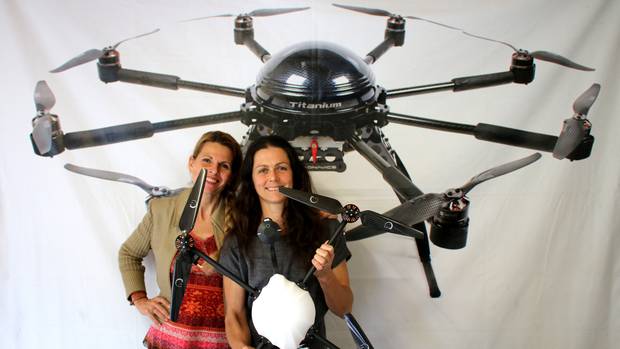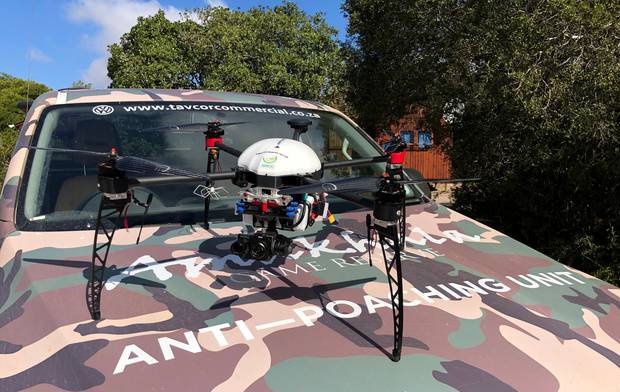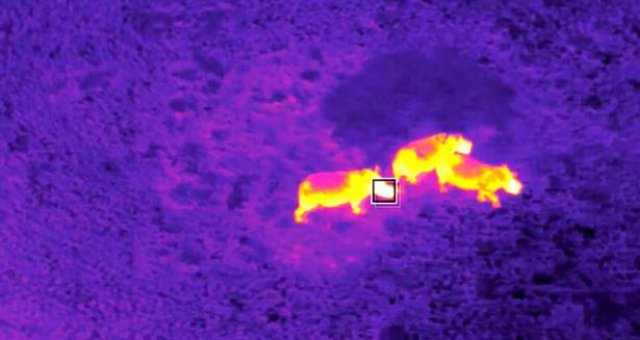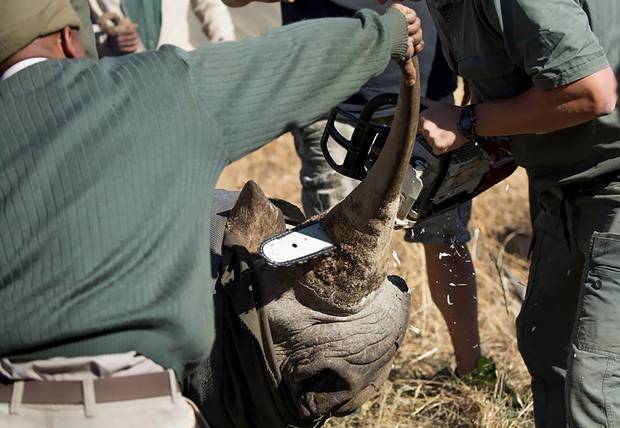South African anti-poaching units have a new weapon to use against rhino poachers, all thanks to Aeronavics a drone company based in Raglan, New Zealand.
Recent studies estimate roughly 18,000 southern white rhino and 5500 black rhino are left in Africa but the numbers are dropping.
Rhino horn is trafficked by poachers into Asian countries where they are believed to have healing powers, or they are simply poached as a status symbol.
Aeronavics was approached by Sarah Jones from the Tusk and Horn Wildlife Trust about creating and providing a drone that could help anti-poaching units
Last year Jones, also from Raglan, visited South Africa and went into the field with Dr William Fowlds, a world-renowned rhino conservationist.
Fowlds explained drones could be highly useful in conservation work if they could provide night-vision support to security teams on the ground.
Jones sought the help of Aeronavics after returning home, believing they had the technology to create a drone to assist anti-poaching units.
“When Sarah contacted us we instantly wanted to help,” Linda Bulk, director of Aeronavics said.
“Both Rob (Brouwer, co-director) and I were deeply moved by her relay of what was going on in South Africa”.
Aeronavics spent the past 18 months developing a number of prototypes to help protect rhinos, deciding on a quad rotor model with night vision.
It can fly for around 45 minutes, withstand high levels of wind and comfortably fly several kilometres without losing contact with the radio and video controls.
Jones’ trust and the Tanglewood Foundation helped pay expenses like travel, and Fowlds’ African Rhino Conservation Collaboration funded the thermal camera.
Bulk and flight engineer Hadley Boks-Wilson flew to South Africa on July 30 to deliver the prototype to Fowlds.
On arrival, they were shown how rhinos are dehorned as a preventative measure against poaching.
“It was heart-wrenching to see this magnificent creature lying helplessly on the ground, sedated but aware, as his pride and glory, his defining feature, was sawn of his head.
“You can just imagine their terror as the penetrating noise of a chainsaw is cutting into their horn just inches away from their face, followed by a grinder to remove the remainder,” Bulk said.
“But at least this doesn’t actually hurt them physically, unlike the brutal force poachers apply as they savage their faces with axes.”
Bulk and Boks-Wilson spent a week training the anti-poaching unit of Amakhala at the Fowlds family game reserve.
Since returning to New Zealand last week, Bulk has been investigating other ways to help protect rhinos and other endangered species.
“We now have to strategise how to make it feasible to deploy this technology on a wide scale.”
Source: New Zealand Herald




